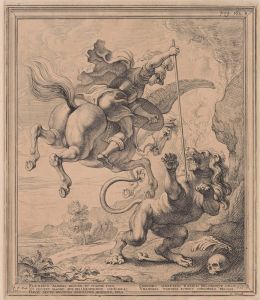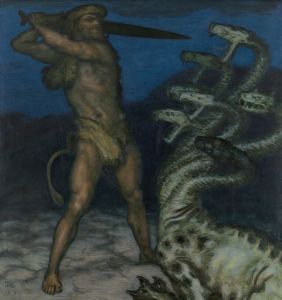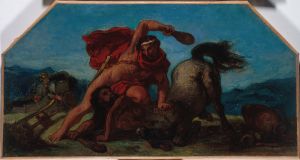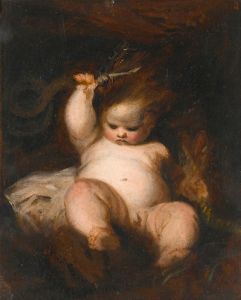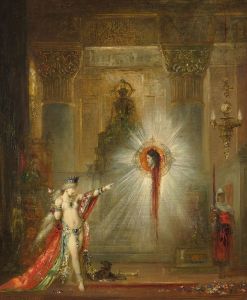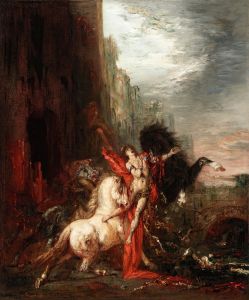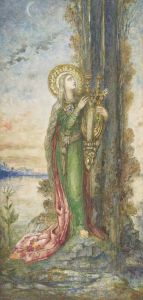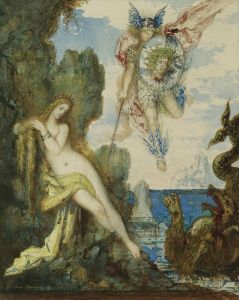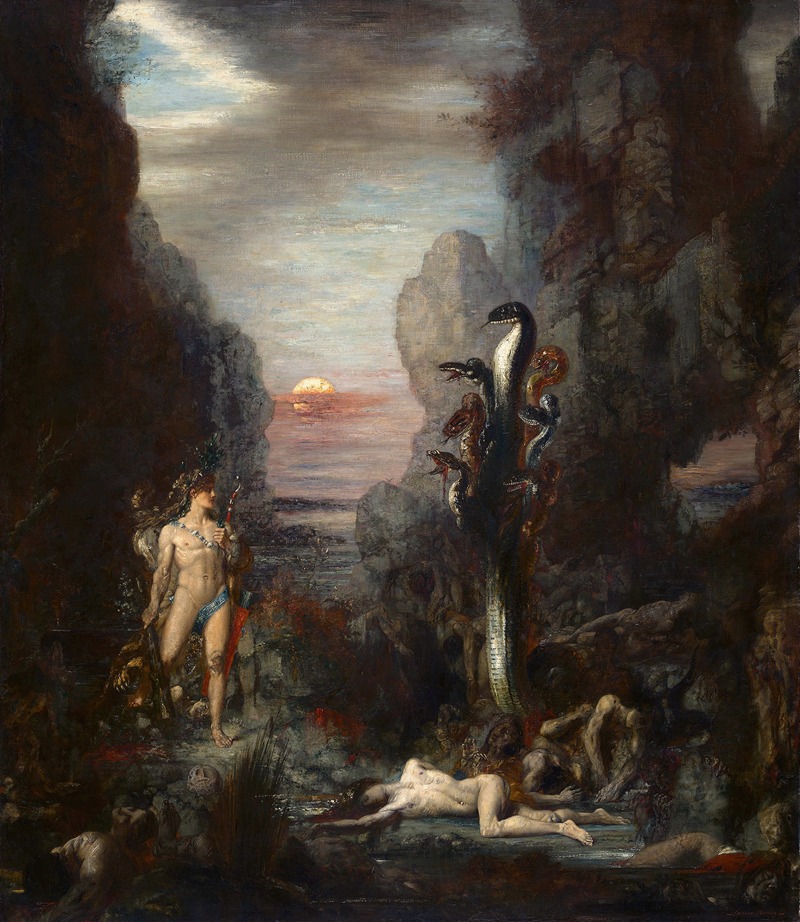
Hercules and The Lernaean Hydra
A hand-painted replica of Gustave Moreau’s masterpiece Hercules and The Lernaean Hydra, meticulously crafted by professional artists to capture the true essence of the original. Each piece is created with museum-quality canvas and rare mineral pigments, carefully painted by experienced artists with delicate brushstrokes and rich, layered colors to perfectly recreate the texture of the original artwork. Unlike machine-printed reproductions, this hand-painted version brings the painting to life, infused with the artist’s emotions and skill in every stroke. Whether for personal collection or home decoration, it instantly elevates the artistic atmosphere of any space.
"Hercules and The Lernaean Hydra" is a painting by the French Symbolist artist Gustave Moreau, created in 1876. Moreau, born in 1826 and deceased in 1898, was known for his intricate and imaginative works that often drew on mythological and biblical themes. This particular painting is one of his many interpretations of classical mythology, showcasing his distinctive style that combines detailed realism with fantastical elements.
The painting depicts the mythological scene of Hercules, the divine hero of Greek mythology, battling the Lernaean Hydra, a serpentine water monster. According to the myth, the Hydra was one of the Twelve Labors of Hercules, a series of tasks that were meant to be impossible to complete. The Hydra had multiple heads, and for each head that was cut off, two more would grow in its place, making it a formidable opponent.
In Moreau's rendition, Hercules is shown in the midst of his struggle with the Hydra. The composition is dynamic, capturing the intense and perilous nature of the battle. Hercules is portrayed with a muscular physique, emphasizing his strength and heroism. He wields a club, a traditional attribute of the hero, and is engaged in a fierce confrontation with the multi-headed beast. The Hydra is depicted with a multitude of writhing heads and serpentine bodies, adding to the chaotic and menacing atmosphere of the scene.
Moreau's use of color and detail is particularly notable in this work. The painting features a rich palette, with deep blues, greens, and reds that enhance the dramatic tension. The intricate detailing of the Hydra's scales and the musculature of Hercules demonstrate Moreau's technical skill and his ability to bring mythological subjects to life with vivid realism.
The background of the painting is equally elaborate, with a dark, almost otherworldly landscape that adds to the sense of danger and mystery. This setting not only frames the central action but also contributes to the overall mood of the piece, creating a sense of an epic struggle taking place in a mythical realm.
"Hercules and The Lernaean Hydra" is housed in the Musée Gustave Moreau in Paris, which was once the artist's home and studio. The museum contains a vast collection of Moreau's works, offering insight into his artistic process and the themes that fascinated him throughout his career. This painting, in particular, exemplifies Moreau's fascination with mythology and his ability to reinterpret these ancient stories through his unique artistic lens.
Moreau's work had a significant influence on later artists, particularly those associated with the Symbolist movement. His emphasis on imagination, symbolism, and the exploration of the fantastical aspects of human experience resonated with many artists who sought to move beyond the naturalism that dominated 19th-century art. "Hercules and The Lernaean Hydra" remains a testament to Moreau's skill as a painter and his enduring legacy in the world of art.







